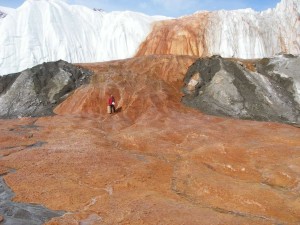Creagrutus yanatili, a new species of Creagrutus tetra was discovered in southeastern Peru. Ichthyologists Dr. Antony Harold and Dr. Norma Salcedo successfully published their discovery of this new species in the journal ofIchthyological Exploration of Freshwaters.
Tetra fish species are described as small freshwater fishes belonging to the family Characidae. Due to their hardiness and bright colors, tetra fishes are quite popular with aquarists. Creagrutus yanatili differs from other Creagrutusspecies in South America due to its well developed papillae (small projections) that extend behind the head and its nearly black pigmentation that covers much of the fins and body of the fish. To view pictures of the expedition click here.
For more information regarding this exciting species description, please see the published journal article:
Harold, AS and NJ Salcedo (2009) Creagrutus yanatili, a new species from the Río Urubamba drainage, southeastern Peru (Teleostei: Characidae). Ichthyological Exploration of Freshwaters 20, pp. 377–383.


